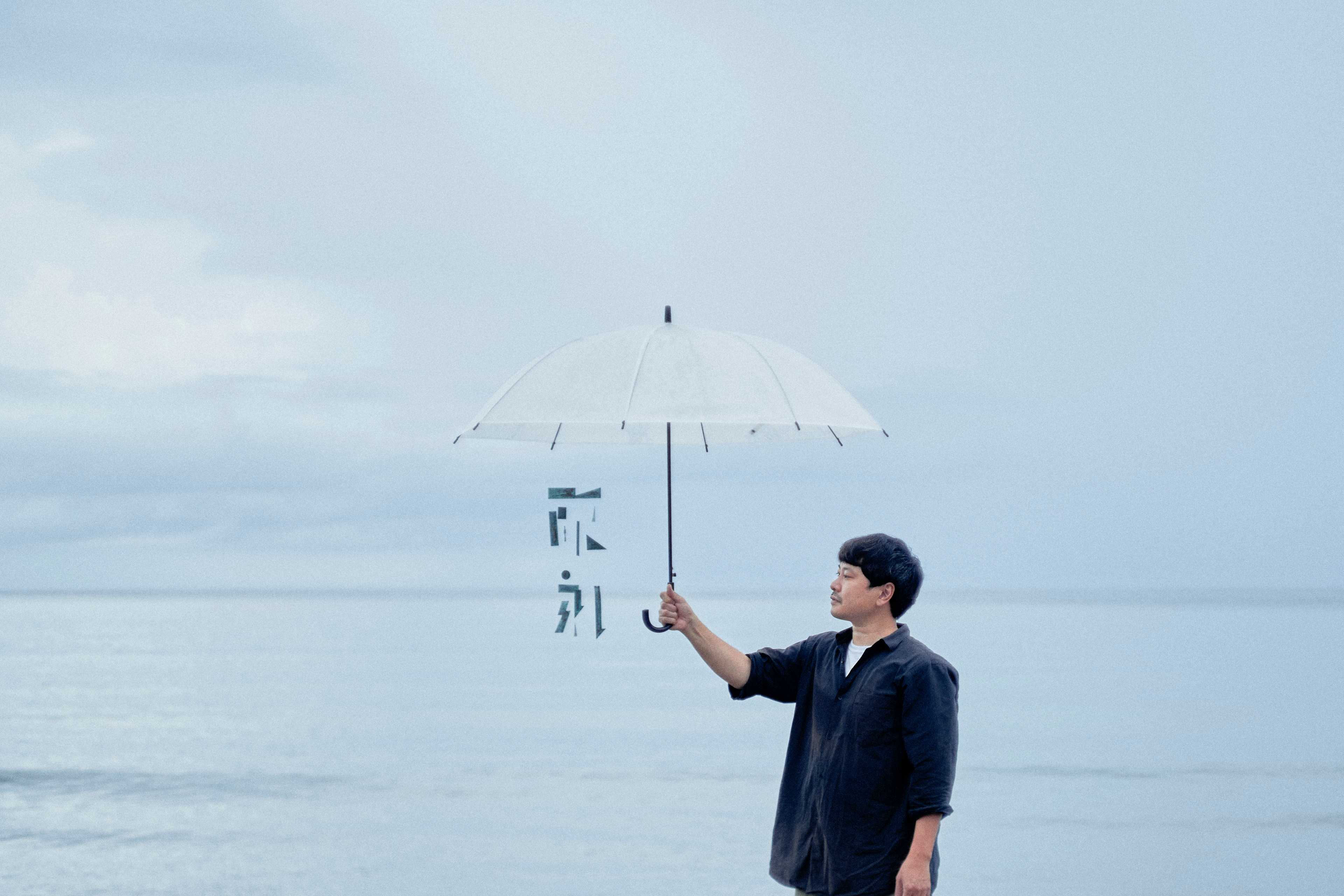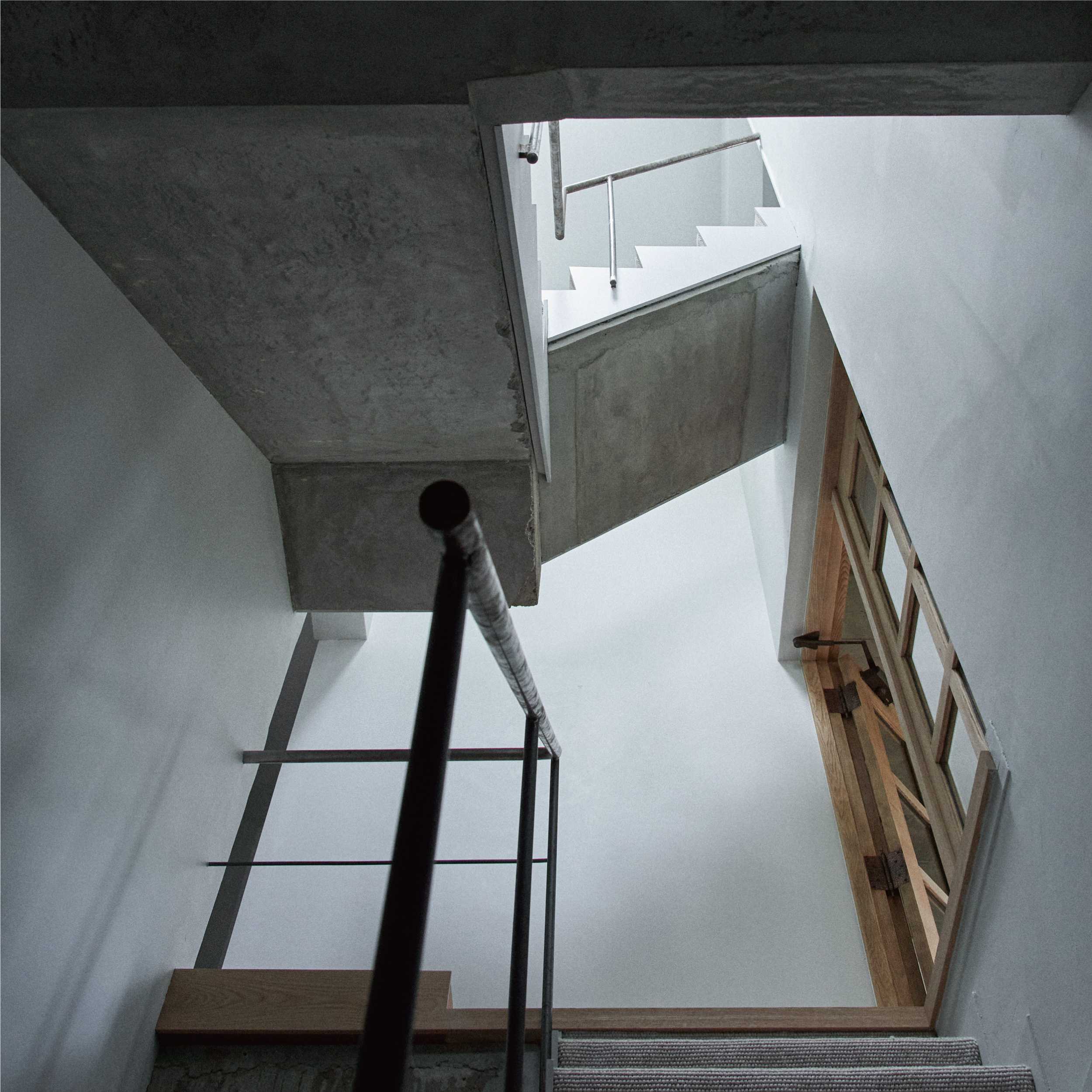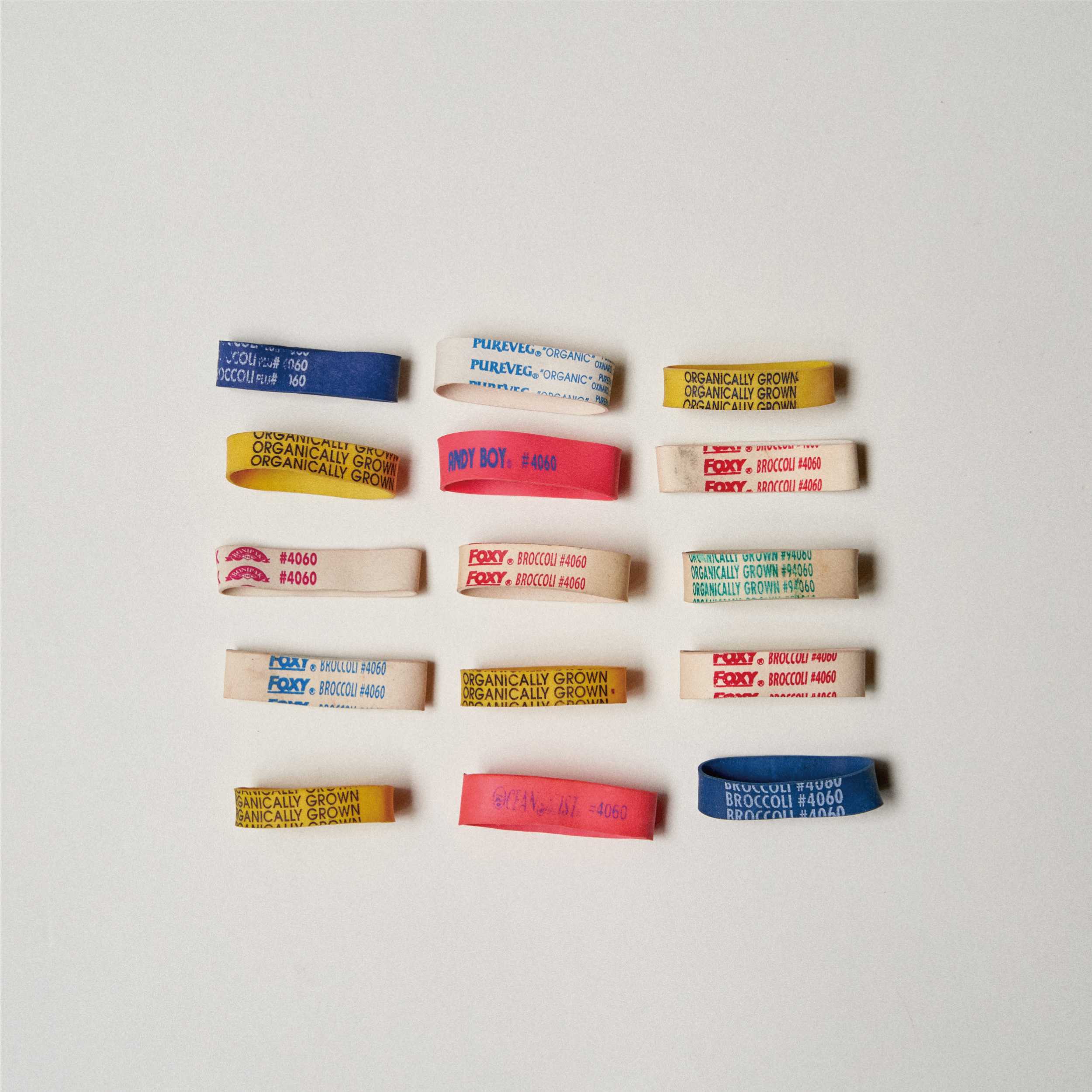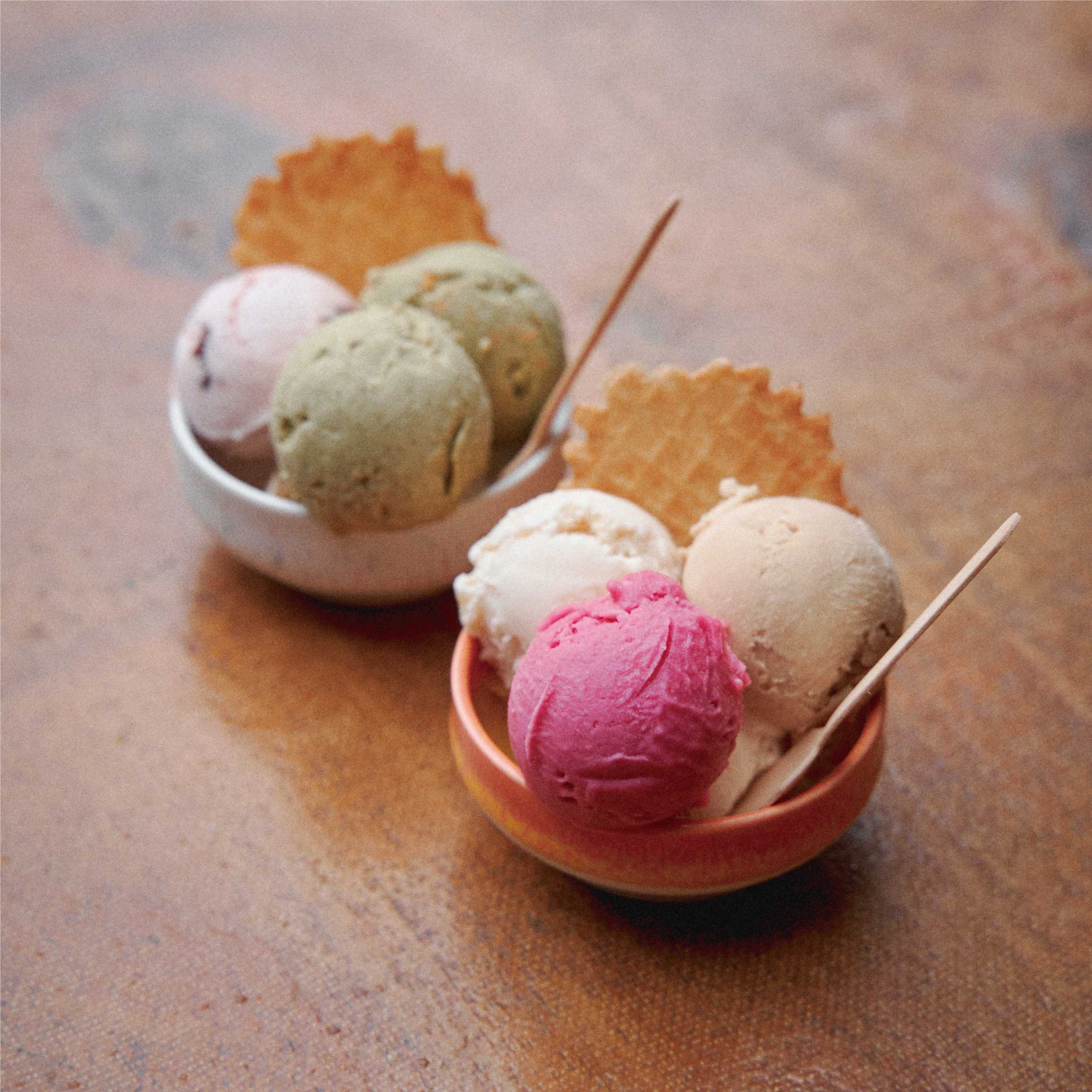Daijiro Ohara and the language of movement
Handwritten characters are at the heart of the work of Daijiro Ohara. The designer translates familiar symbols in his own unique way, built on his exploration of the connections between language and the environment. When Ohara discusses the style of characters and letters, he speaks not only of our style as individuals, but the way our tools and surroundings influence the text we write. These perspectives have been developed through countless workshops and experiments, taking his writing off the page and into the world around us. From his studio in Hayama, Ohara shares an insight into his fascinating mobiles and kinetic typography sculptures.
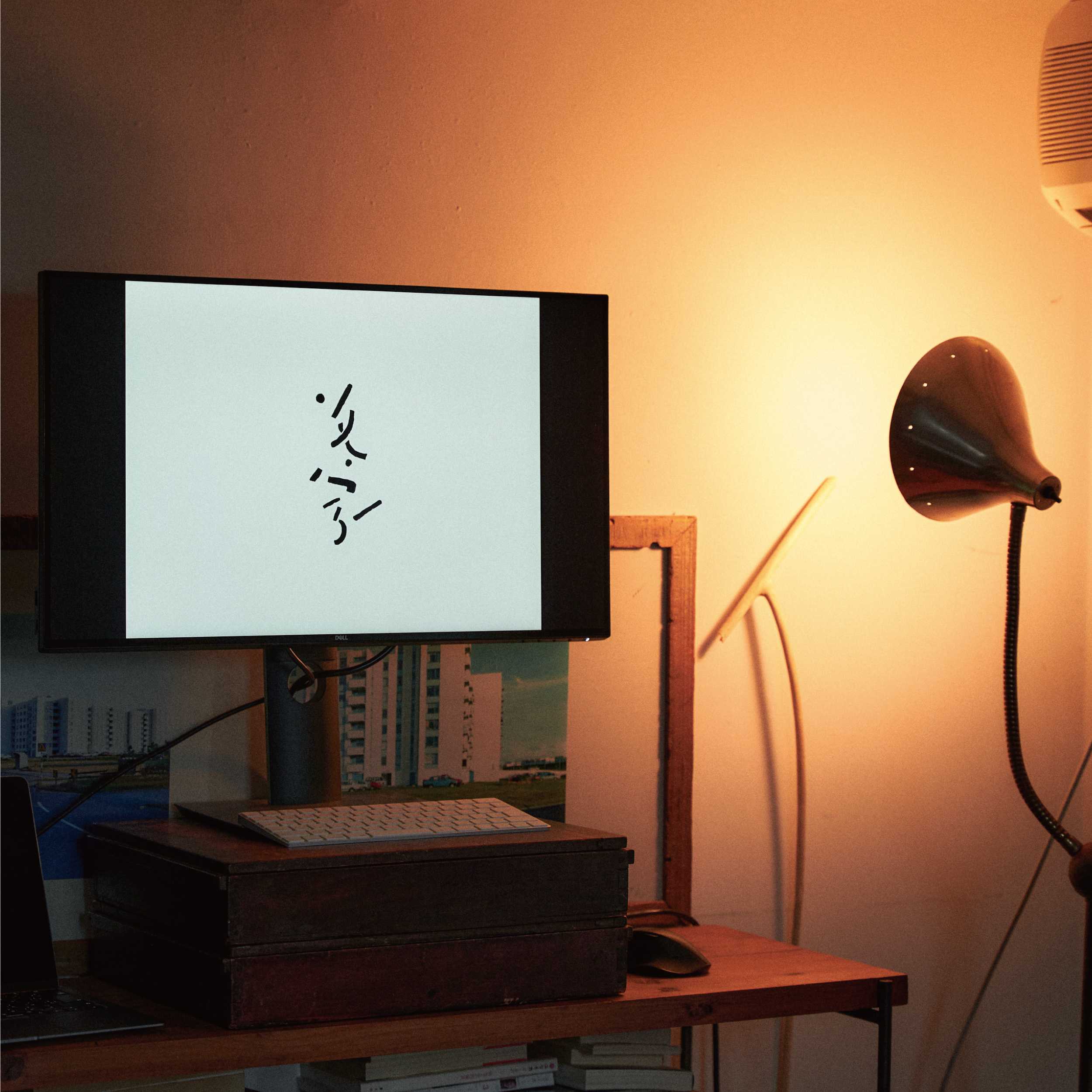
Play
The Italian designer Bruno Munari famously referred to his mobiles as macchina inutile (useless machines). The mobiles were seen to have no specific function, simply consisting of colours, movements and shapes. Yet for Ohara, this uselessness has a certain significance: “Making these useless things, my heart dances as I watch them, putting my mind at ease,” he says. “In fact, they’re really useful.” As the events of last year saw him spending more time at his studio, he began experimenting with ready-made mobiles, using soap, lemons or whatever was at hand.
“The designer Bunpei Yorifuji said that as we grow up, we lose the opportunity to play with all our might. As adults, even though our bodies remember things like digging holes at the beach, there are fewer opportunities to engage in this kind of play on a daily basis,” says Ohara. “In Japanese, asobi not only means play, but having some room to move. Ensuring that our work and schedules aren’t too tightly packed creates longevity, giving us room to grow — and play.”
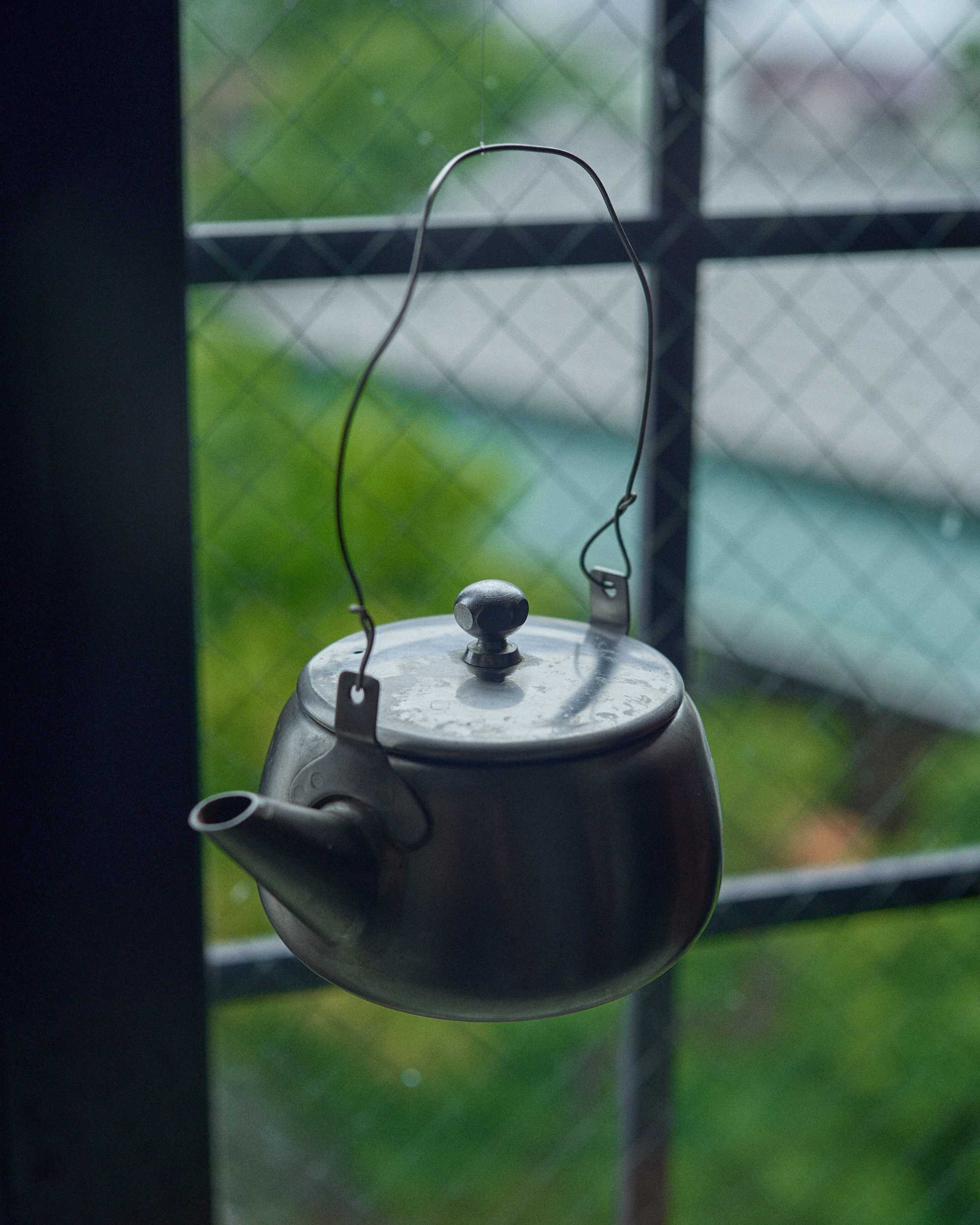
Rhythm of the hand
A cascading series of strokes. A long, drawn-out pause. An intermittent burst; a flutter of activity. These are the natural movements that unfold as Ohara composes his work. The links between drawing and music have taken on new meaning since 2013, when the designer joined rapper Illreme and composer Shuta Hasunuma’s improvised performance, creating sounds through the act of drawing, or as he calls it, the “pen drum”.
The trio’s ongoing collaboration, Typograpy, was the inspiration behind this mobile, which spells out 文字 (moji), meaning characters. Originally created for their upcoming album’s artwork, the mobile featured on the flyer for Hasunuma’s planned concert series at The Museum of Modern Art, Hayama. Describing his creations, Ohara wrote, “There is something musical that lives inside photos and graphics. Having waited quietly for the performance to begin, you watch the mobiles in constant motion, hoping that an image will appear.”
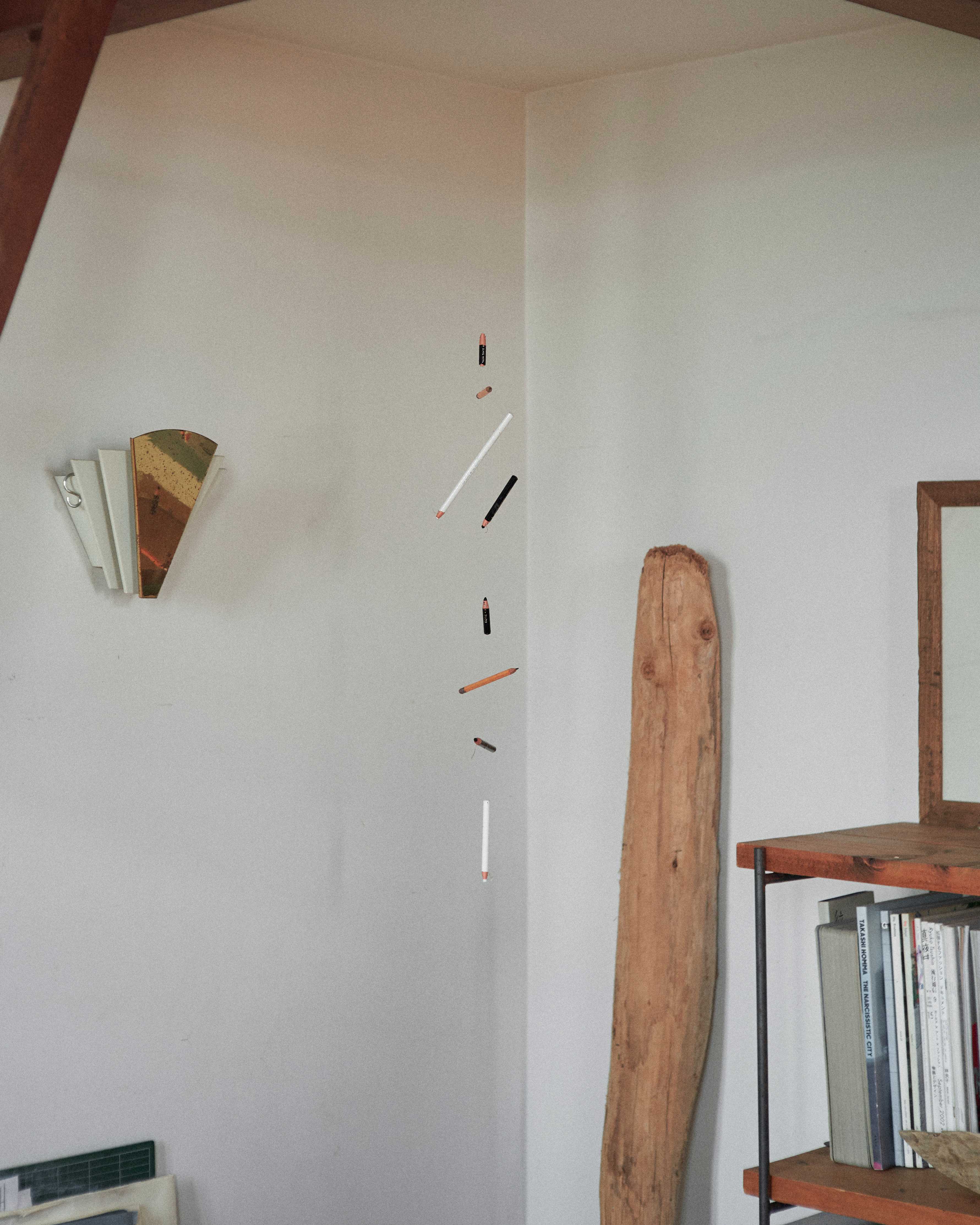
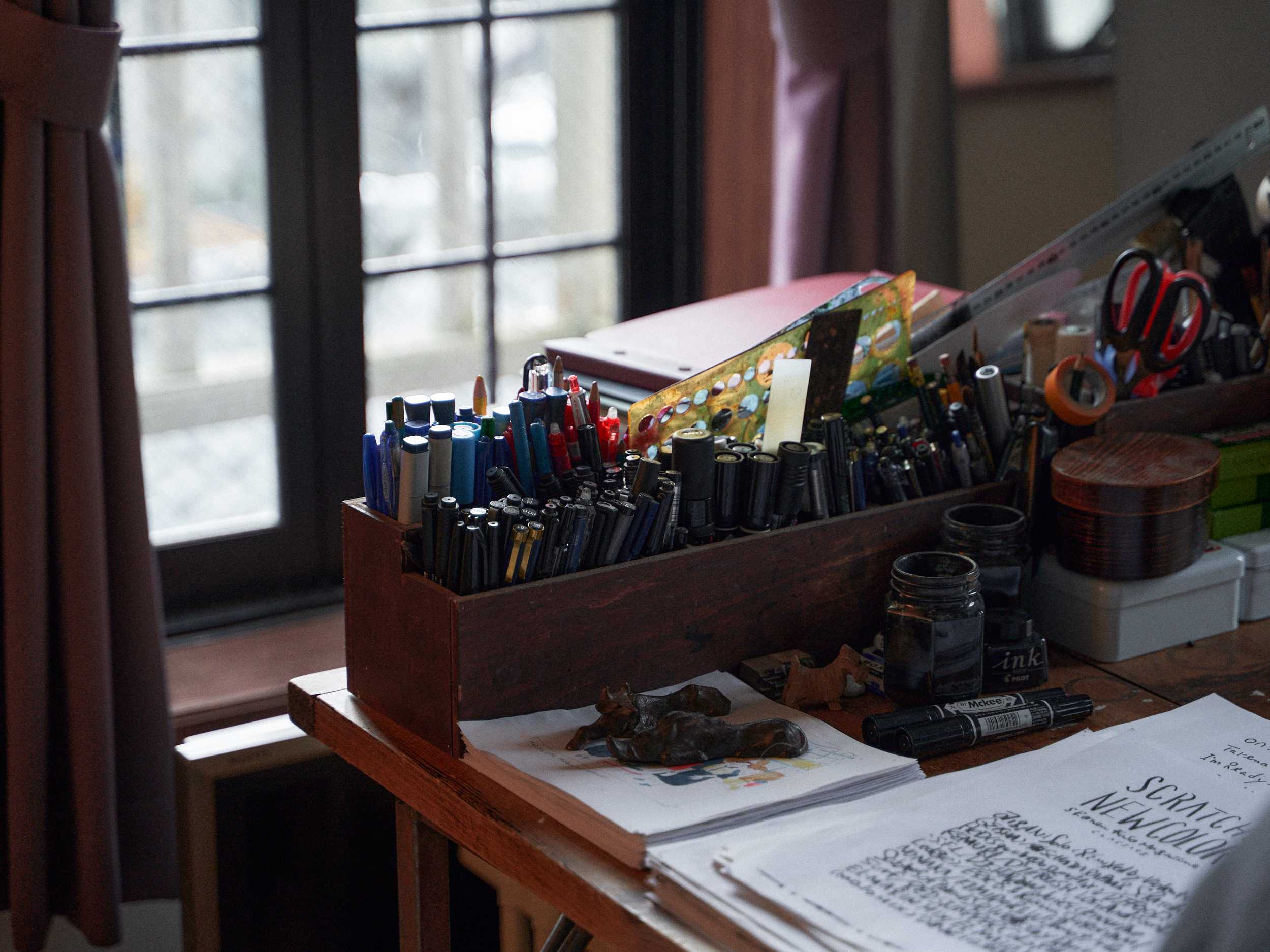
Gravity
“The way that we read English from left to right; the gravity of Chinese characters arranged vertically; the Japanese method of ending written strokes with tome (stop), hane (hook) or harai (sweep). All of these are connected to the earth’s phenomena. Characters are deeply linked to physical phenomena and may never have originated if we were living in a zero-gravity environment,” explains Ohara. “Making mobiles is completely different to writing characters. It takes days to make something that you can write in an instant, but this provides an opportunity to face the earth’s gravity.”
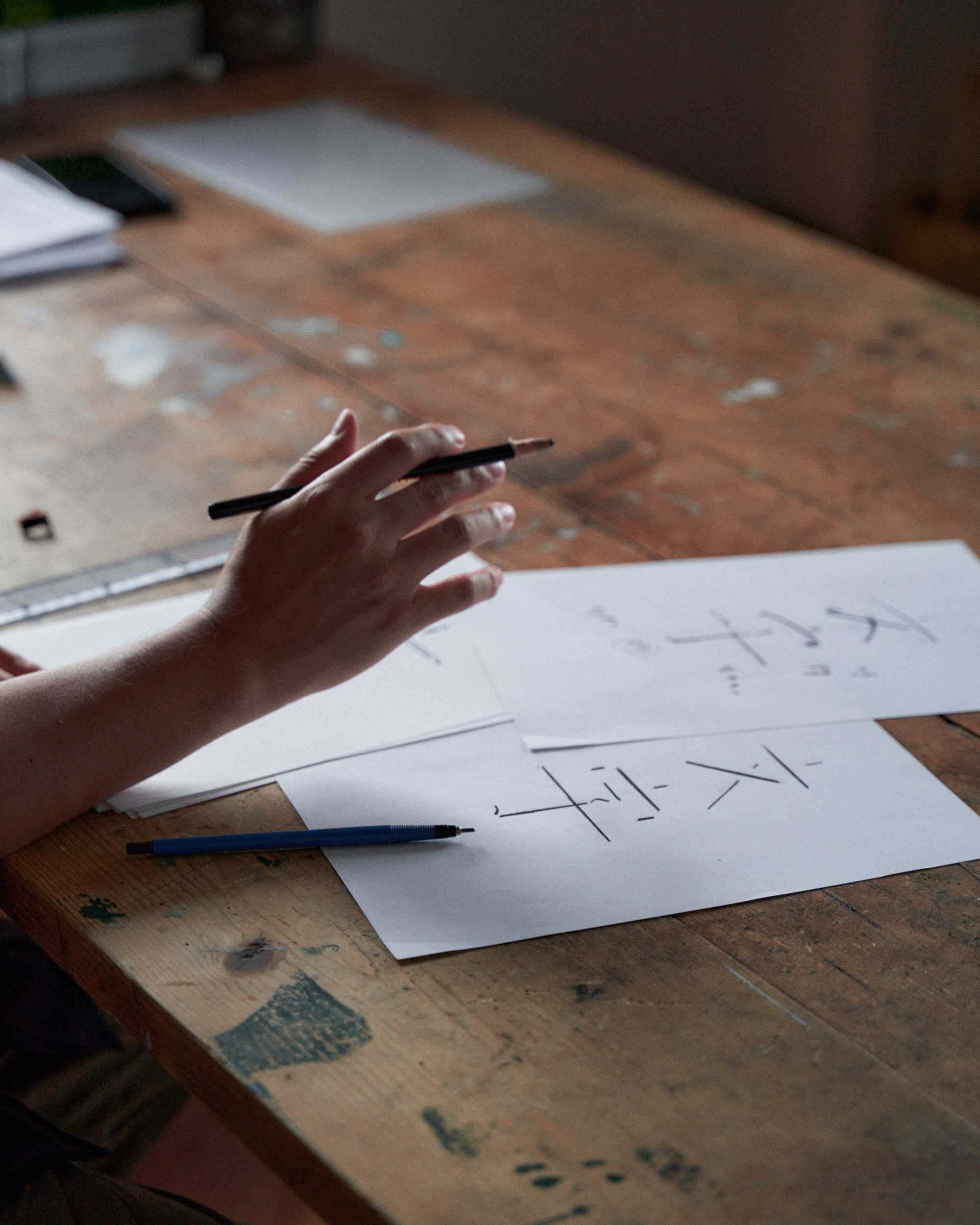
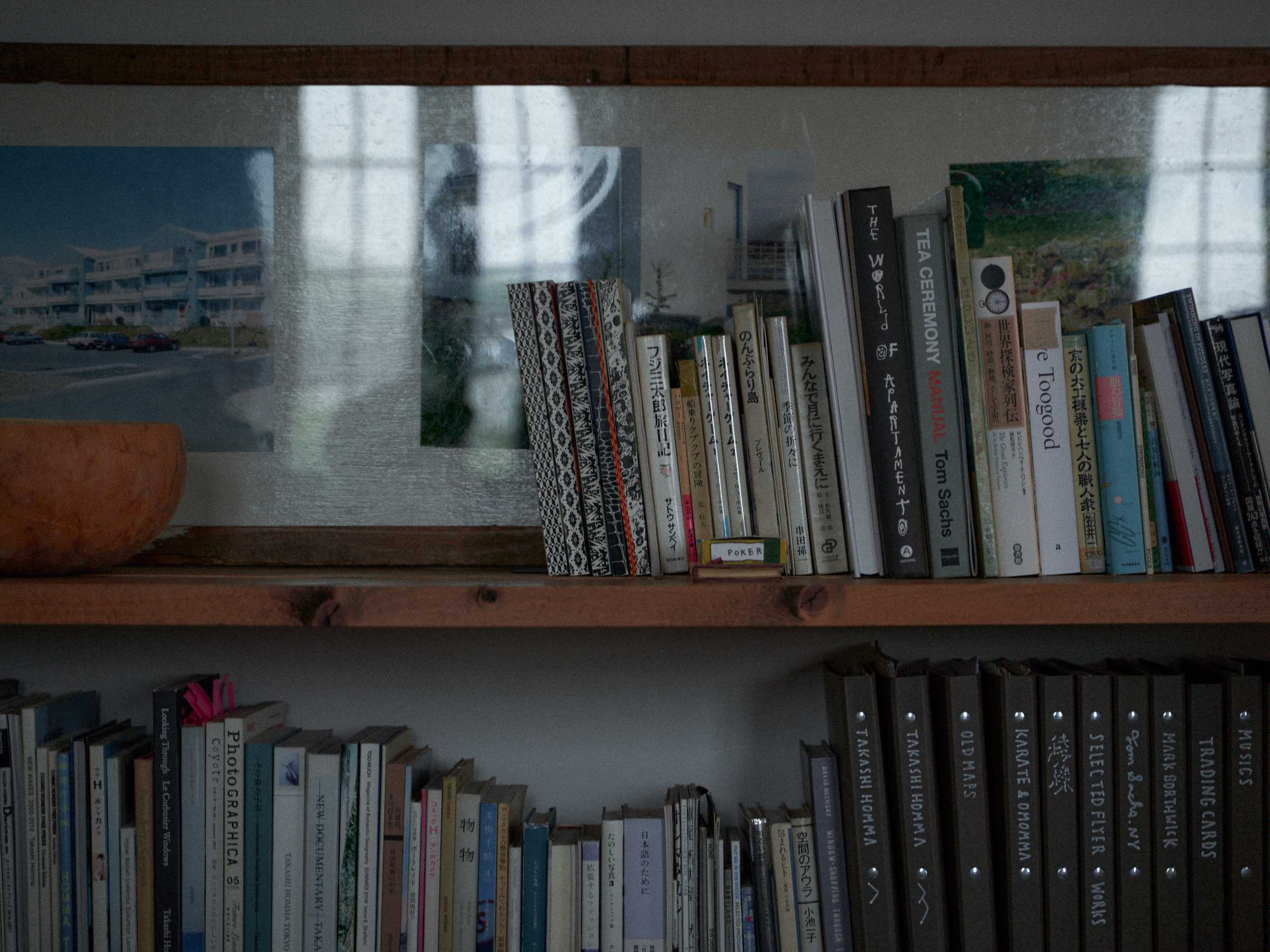
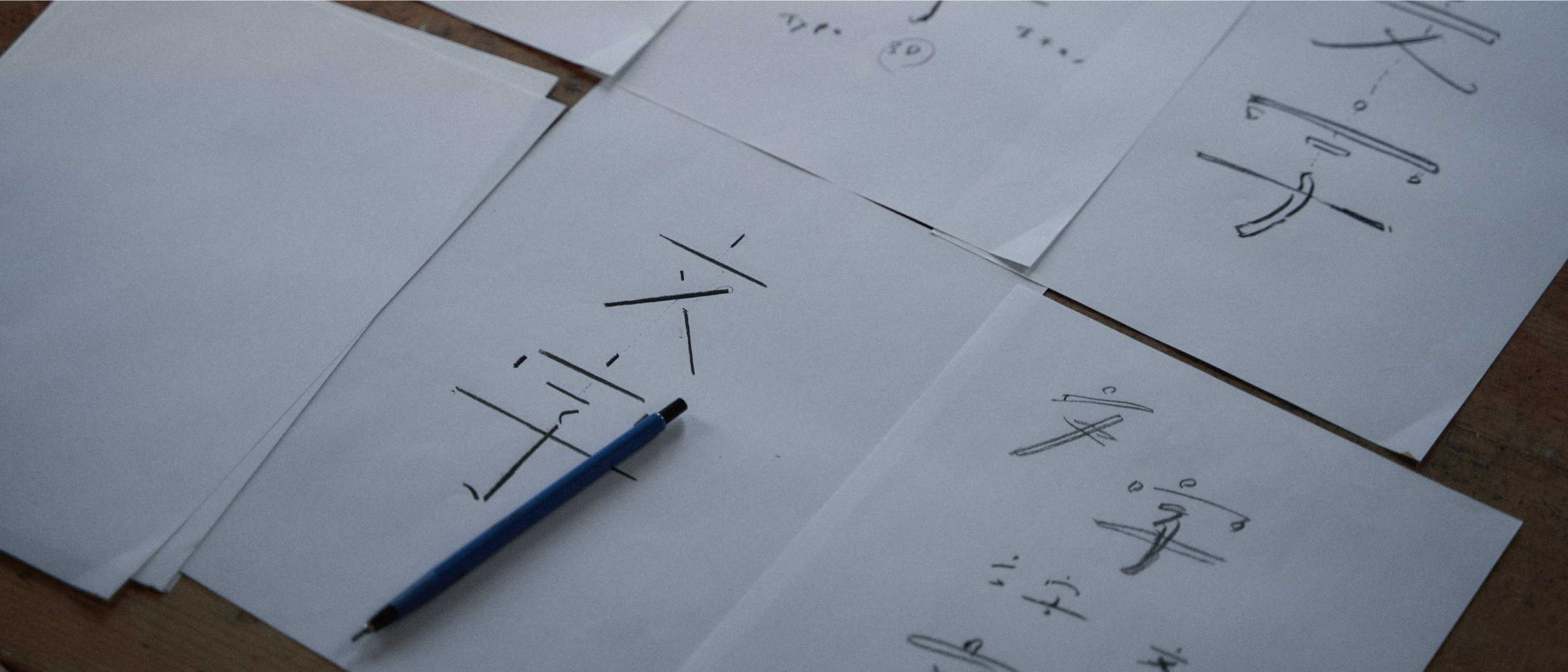
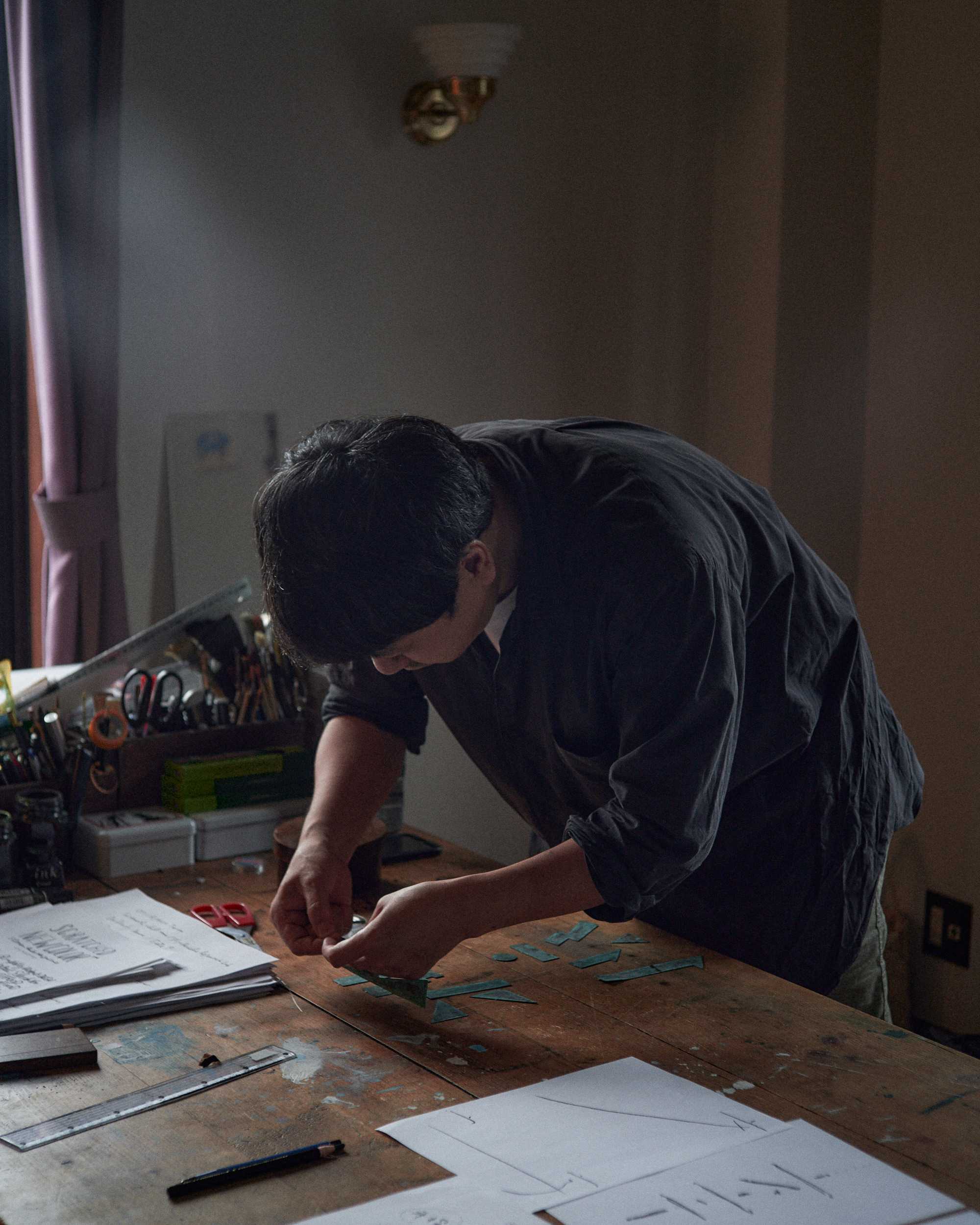
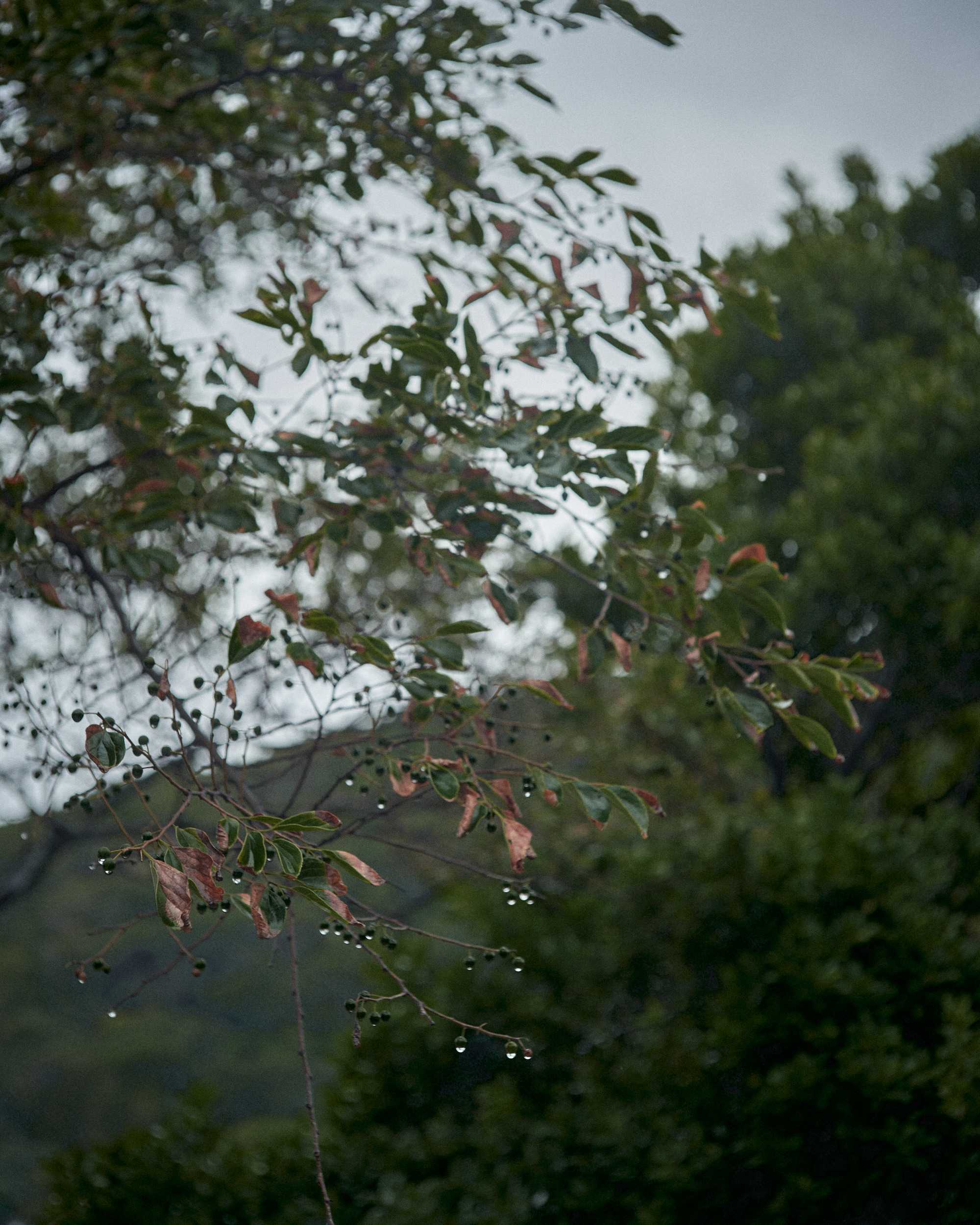
Living things
Standing by the ocean not long after a squall has passed through, Ohara gazes at the copper elements rotating ever so slowly beside him. The mobile, with its captivating movements, appears to be in dialogue with the designer and the landscape. “At an exhibition, watching a video work seems to require a lot of physical strength, but for some reason, mobiles dominate time in the space and you can become absorbed in their presence for quite some time. They sway, spin and create ever-changing shadows; it’s as though they are living, breathing animals with a connection to their surroundings.”
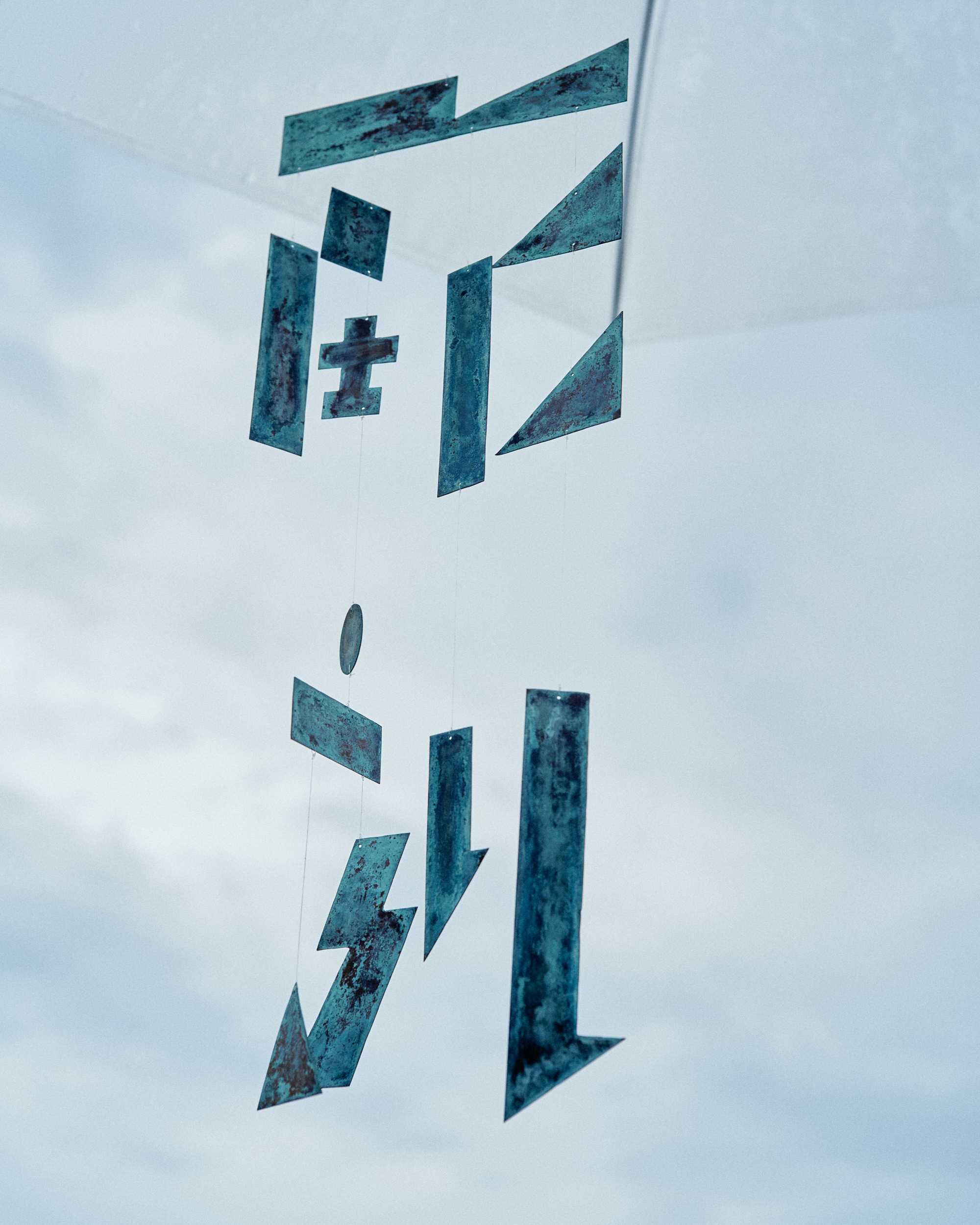
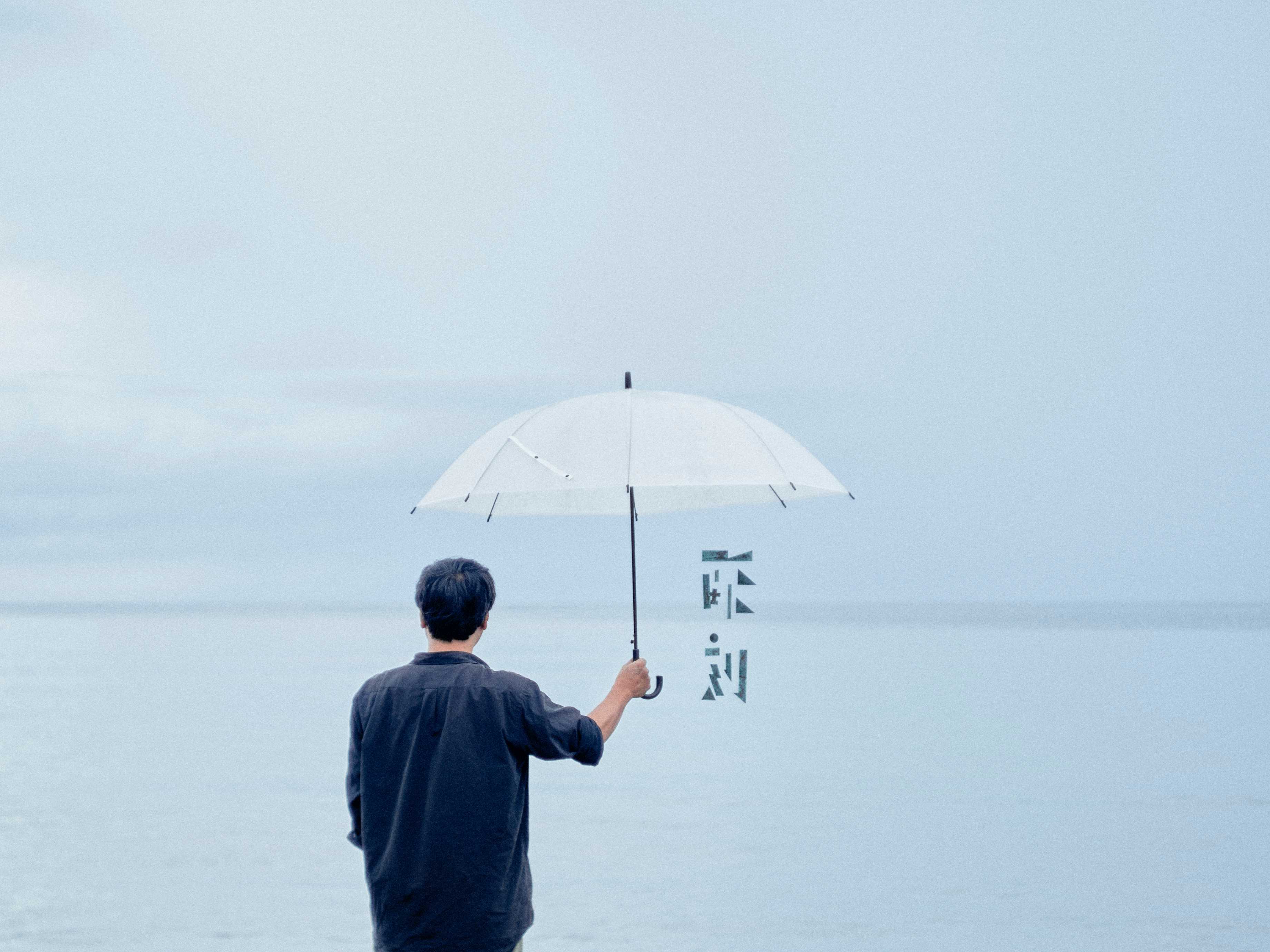
Text by Ben Davis
Photo by Daisuke Hashihara

